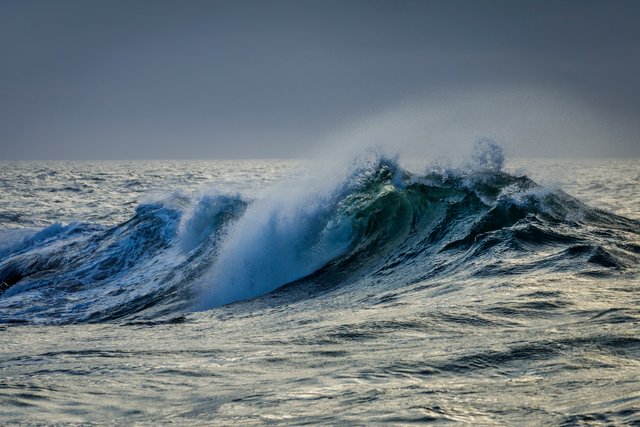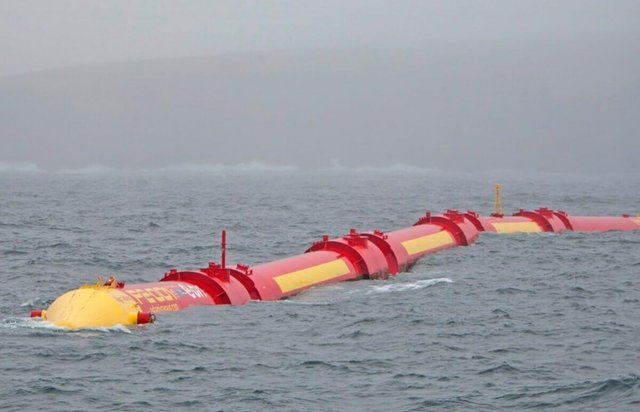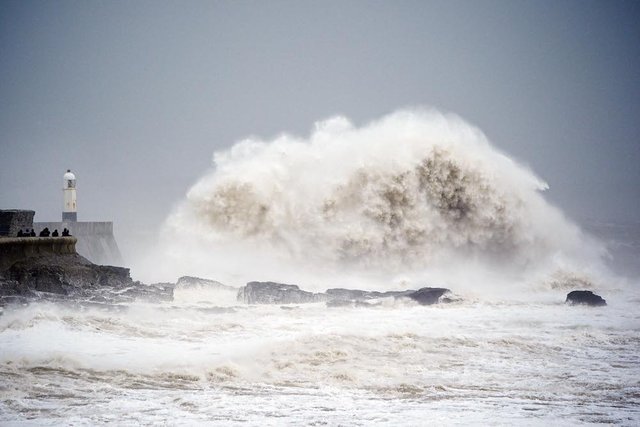
Source
Our civilization increasingly relies on energy for survival, and we must obtain this energy from sustainable sources if we don't want to deplete resources and, in turn, the planet. That's why both the public and private sectors are continually researching the discovery of new sustainable energy sources, in the case of today's post, so-called wave energy.
Nuestra civilización depende cada día más y más de la energía para sobrevivir, además esta energía debemos obtenerla utilizando fuentes sostenibles si no queremos acabar con los recursos y de paso con el planeta. Por eso tanto desde el sector público como privado se investiga continuamente el descubrimiento de nuevas fuentes de energía sostenibles, en el caso que hoy nos ocupa seria la llamada energía undimotriz.
Wave energy is a type of renewable energy that harnesses the mechanical energy generated by the movement of ocean waves to produce electricity. Wind, generated by the uneven heating of the Earth's atmosphere by the sun, creates waves on the ocean surface. These waves carry a large amount of kinetic energy, which is captured through various technological devices that transform wave motion into electrical energy.
La energía undimotriz es un tipo de energía renovable que aprovecha la energía mecánica generada por el movimiento de las olas del mar para producir electricidad. El viento, generado por el calentamiento desigual de la atmósfera terrestre por el sol, crea ondas en la superficie del océano. Estas olas transportan una gran cantidad de energía cinética que se captura a través de diversos dispositivos tecnológicos que transforman el movimiento de las olas en energía eléctrica.

Source
Ocean waves generate between 50 and 80 trillion watts of power worldwide, but current technologies fail to efficiently capture that energy. A recent breakthrough proposes using underwater sound waves to amplify the power of surface waves, using a phenomenon called "triad resonance." Essentially, acoustic waves would be generated underwater that, when interacting with surface waves, would increase their size and energy.
Las olas oceánicas generan entre 50 y 80 billones de vatios de potencia a nivel mundial, pero las tecnologías actuales no logran capturar esa energía de manera eficiente. Pero Un avance reciente propone usar ondas sonoras submarinas para amplificar la potencia de las olas superficiales, mediante un fenómeno llamado “resonancia de tríada”. Básicamente, se generarían ondas acústicas bajo el agua que, al interactuar con las olas superficiales, aumentarían su tamaño y energía.
This would allow current wave energy harvesting devices to become much more efficient, bringing us closer to harnessing the enormous energy potential of the sea. With the resonant triad, two underwater acoustic waves interact to transfer their energy to a surface wave, increasing its size by up to 30%. This process is most efficient in shallow waters, where energy exchange is optimized.
Esto permitiría que los dispositivos actuales para captar energía de las olas sean mucho más eficientes, acercándonos a aprovechar ese enorme potencial energético del mar. Con la tríada resonante dos ondas acústicas submarinas interactúan para transferir su energía a una ola superficial, aumentando su tamaño hasta en un 30% . Este proceso es más eficiente en aguas poco profundas, donde el intercambio de energía se optimiza.

Source
But all that glitters is not gold. Acoustic waves can interfere with the communication, orientation, and reproduction of species like whales and dolphins, and high levels of underwater noise cause stress, malformations, and even death in fish and zooplankton. Not to mention the possibility of things getting out of hand and a tsunami devastating the coasts, with the cure being worse than the disease.
Pero no es oro todo lo que reluce, las ondas acústicas pueden interferir en la comunicación, orientación y reproducción de especies como ballenas y delfines y los altos niveles de ruido submarino provocan estrés, malformaciones e incluso muerte en peces y zooplancton. Por no hablar de la posibilidad de que se nos vaya de las manos y se cree un tsunami que arrase las costas y nos salga peor el remedio que la enfermedad.
In short, research into the use of acoustic waves to amplify wave energy represents a promising avenue for renewable energy generation, although it is still in its early stages and requires further studies to assess its feasibility and sustainability. There is no doubt that if we can extract it without harming anyone, this could be an excellent source of renewable energy.
En resumen, la investigación sobre el uso de ondas acústicas para amplificar la energía de las olas representa una prometedora vía hacia la generación de energía renovable, aunque aún se encuentra en etapas iniciales y requiere de más estudios para evaluar su viabilidad y sostenibilidad. No cabe duda de que si conseguimos extraerla sin perjudicar a nadie esta puede ser una excelente fuente de energía renovable.
More information/Más información
https://theconversation.com/wave-energys-huge-potential-could-finally-be-unlocked-by-the-power-of-sound-new-research-253422
https://www.ecoticias.com/hoyeco/sonido-resonancia-triada-mar/20354/